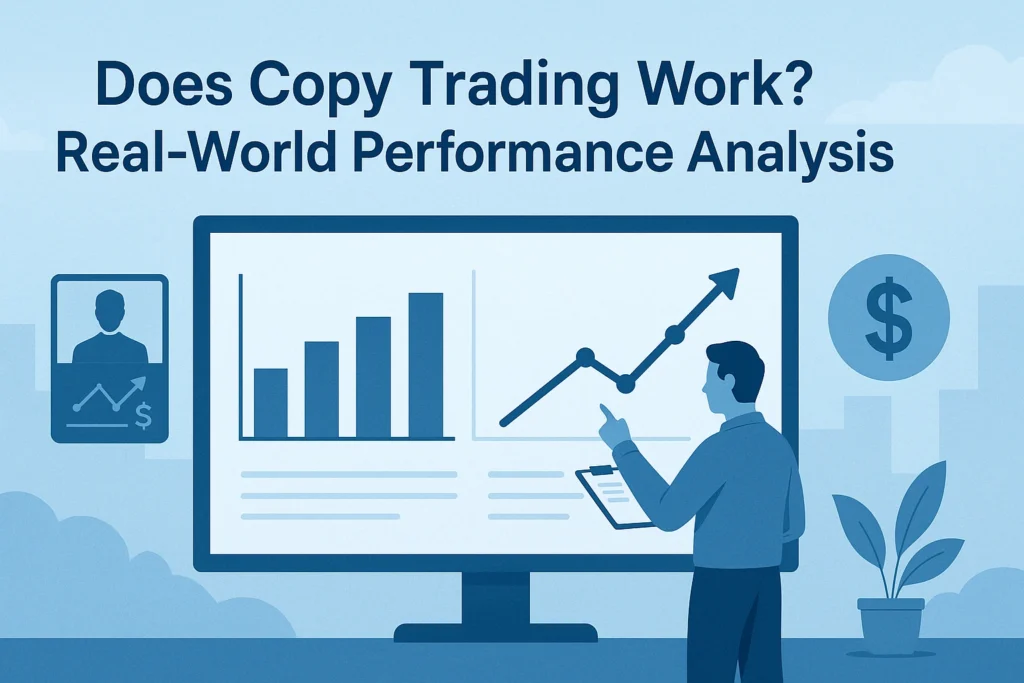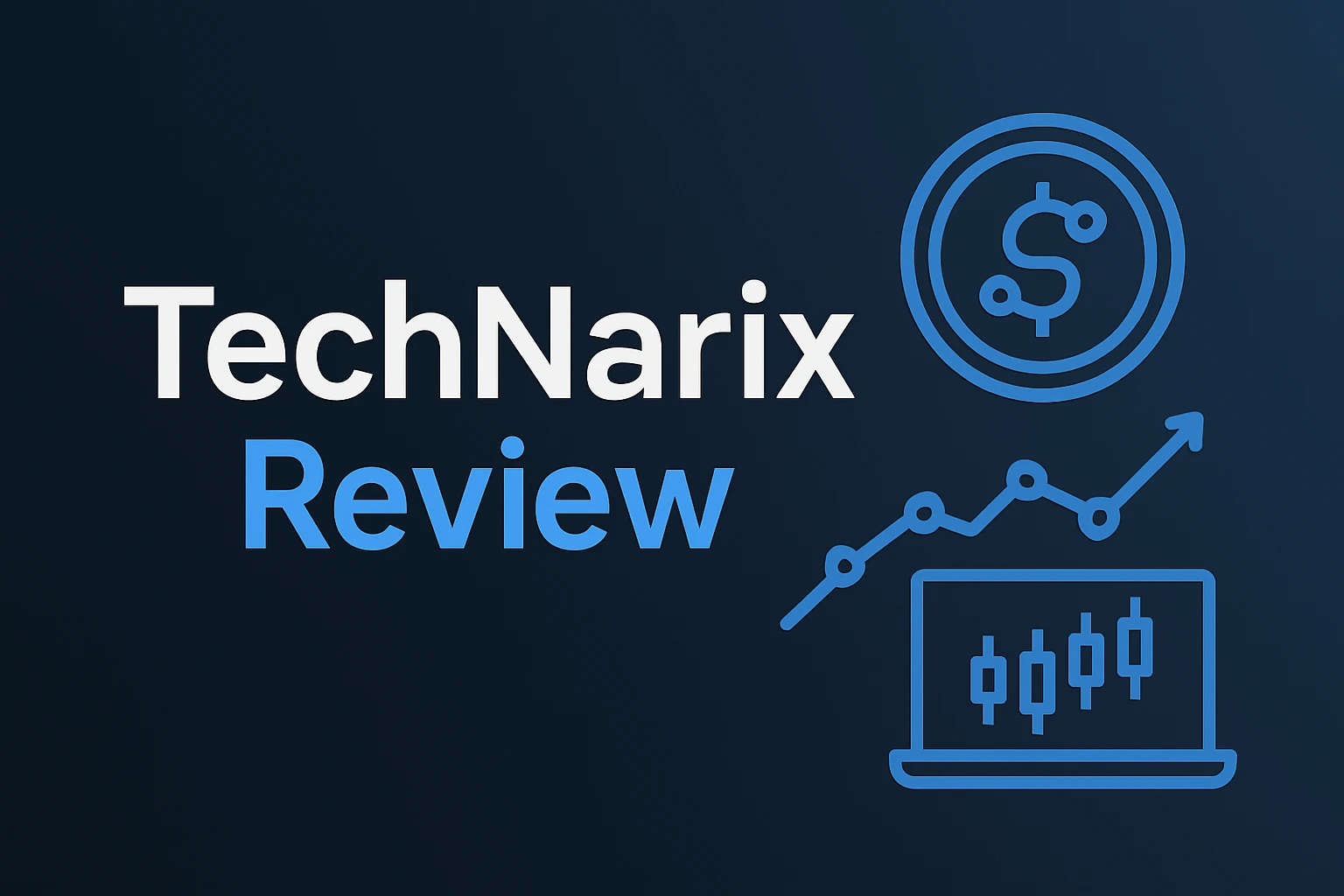After five years of navigating the volatile waters of cryptocurrency markets, I’ve watched copy trading evolve from a niche concept to a mainstream investment strategy. Whether you’re considering your first crypto investment or looking to diversify your existing portfolio, the promise of copy trading is undeniably attractive: leverage the expertise of successful traders without needing to develop your own complex strategies. But the critical question remains: is copy trading profitable in practice, particularly in the erratic world of cryptocurrency?
This comprehensive guide explores the profitability of copy trading, examining the evidence, strategies, risks, and opportunities to help you make an informed decision before committing your capital.
What is Copy Trading: Understanding the Fundamentals
Copy trading is an automated investment strategy that allows investors to automatically replicate the trading positions of experienced traders. When the trader you’re following opens a position, the same position is proportionally opened in your account. Similarly, when they close their position, yours closes too.
How Copy Trading Works
The process typically follows these steps:
- Platform Selection: Choose a reputable copy trading platform that suits your needs
- Trader Selection: Research and select successful traders whose strategies align with your goals
- Capital Allocation: Determine how much of your portfolio to allocate to copying each trader
- Automated Execution: The platform automatically replicates your chosen trader’s positions in your account
- Performance Monitoring: Track results and adjust your copied traders as needed
Key Components of Modern Copy Trading Systems
| Component | Function | Importance |
|---|---|---|
| Performance Metrics | Provides historical data on trader success | Critical for selection |
| Risk Scoring | Quantifies a trader’s risk-taking behavior | Essential for risk management |
| Proportional Copying | Adjusts position sizes to your capital | Prevents overleveraging |
| Customization Options | Allows setting maximum drawdown limits | Provides control over risk |
| Transparency Tools | Shows complete trading history | Prevents fraud and manipulation |
Is Copy Trading Profitable? Examining the Evidence
The question of profitability depends on numerous factors including platform choice, trader selection, market conditions, and your risk management approach.
Statistical Insights on Copy Trading Profitability
Research and platform data suggest:
- Success Rate Distribution: Approximately 35-45% of copy traders report consistent profitability
- Performance Correlation: Copying consistently profitable traders improves success probability by 70-80%
- Time Horizon Impact: Copy trading profitability typically increases with longer investment horizons
- Diversification Effect: Copying multiple traders can reduce volatility by 15-30%
Factors Affecting Copy Trading Profitability
Several key factors influence whether your copy trading experience will be profitable:
- Trader Selection Quality: The most critical factor – choosing consistently profitable traders with suitable risk profiles
- Market Conditions: Performance varies across bull and bear markets
- Fee Structure: Platform and trading fees can significantly erode returns
- Diversification Level: Copying multiple traders reduces risk but may dilute returns
- Risk Management Settings: Custom stop-loss and take-profit settings affect outcomes
Common Profit Expectations
Based on industry data and my experience, here are realistic profit expectations:
- Conservative Copy Portfolios: 5-15% annual return with lower volatility
- Balanced Copy Portfolios: 15-30% annual return with moderate risk
- Aggressive Copy Portfolios: 30%+ potential returns but with significantly higher risk
- Crypto-Focused Copy Trading: Potentially higher returns (50%+ in bull markets) but with extreme volatility
Crypto Copy Trading: Specialized Considerations
Why Crypto Copy Trading Differs
Cryptocurrency copy trading presents unique challenges and opportunities compared to traditional markets:
- 24/7 Markets: Continuous trading requires traders who can monitor positions around the clock
- Extreme Volatility: Price swings can be 5-10x more dramatic than traditional markets
- Regulatory Gray Areas: Less regulation creates both opportunity and risk
- Novel Asset Class: Technical and fundamental analysis requires specialized knowledge
- Market Manipulation: Smaller market caps make some cryptocurrencies susceptible to manipulation
Profitability Metrics in Crypto Copy Trading
When evaluating crypto traders to copy, focus on these metrics:
- Risk-Adjusted Return: Look for high Sharpe ratios (above 1.5) over long periods
- Maximum Drawdown: Prefer traders who limit drawdowns to under 30%, even during market crashes
- Consistency Across Market Cycles: Verify performance in both bull and bear markets
- Trading Frequency: Understand if the strategy involves day trading or longer-term positions
- Asset Distribution: Check if they trade only majors or venture into altcoins
Platform Selection for Crypto Copy Trading
The platform you choose significantly impacts profitability potential:
| Platform Type | Advantages | Disadvantages |
|---|---|---|
| Exchange-Based Systems | Lower fees, direct execution | Limited trader selection |
| Specialized Copy Platforms | Better analytics, more traders | Additional fee layers |
| DeFi Copy Protocols | Transparency, no custody risk | Higher technical complexity |
| Social Trading Networks | Community insights, trader communication | May encourage herd behavior |
Is Copy Trading Legit? Addressing Security Concerns

Before considering profitability, investors must determine if copy trading is legitimate and secure.
Regulatory Status of Copy Trading
Copy trading exists in varying regulatory frameworks:
- Regulated Environments: Platforms operating under financial authorities (SEC, FCA, ASIC) offer greater protection
- Crypto-Specific Regulation: Evolving rapidly with increasing oversight
- Unregulated Platforms: Operate without regulatory supervision, increasing risk substantially
- Jurisdictional Differences: Legal status varies by country
Identifying Legitimate Copy Trading Services
To distinguish legitimate services from potential scams:
- Regulatory Compliance: Verify licensing and regulatory approval
- Transparent Track Records: Complete, verifiable trading histories
- Realistic Performance Claims: Be skeptical of guaranteed returns or consistent outperformance
- Security Infrastructure: Strong encryption, 2FA, cold storage for crypto
- Clear Fee Structure: No hidden costs or unusual payment models
Copy Trading Scams to Avoid
Common red flags indicating potential copy trading scams:
- Guaranteed Returns: No trading strategy can guarantee specific returns
- Pressure Tactics: Urgency to invest immediately is often a warning sign
- Unrealistic Track Records: Consistent high returns with no drawdowns
- Anonymous or Unverifiable Traders: Inability to verify trader identities
- Withdrawal Difficulties: Problems accessing your funds
Copy Trading Strategy: Maximizing Profitability Potential

Developing a coherent strategy significantly improves profit potential.
Strategic Approaches to Copy Trading
Four primary strategic approaches to consider:
- Diversified Trader Portfolio: Allocate capital across multiple traders with different strategies
- Specialized Focus: Concentrate on traders who excel in specific market conditions
- Hybrid Approach: Combine copy trading with your own direct positions
- Opportunistic Copying: Temporarily copy traders who specialize in current market conditions
Risk Management in Copy Trading
Effective risk management is crucial for long-term profitability:
- Position Sizing: Limit allocation to any single trader (generally 10-20% maximum)
- Stop-Loss Implementation: Set maximum drawdown thresholds
- Correlation Awareness: Avoid multiple traders with highly correlated strategies
- Regular Performance Review: Evaluate and replace underperforming traders
- Capital Preservation Focus: Prioritize avoiding large losses over maximizing gains
Optimizing Copy Trading Performance
Fine-tune your approach with these optimization techniques:
- Performance-Based Rebalancing: Periodically reallocate capital toward better-performing traders
- Market Condition Adaptation: Adjust copying strategy during changing market phases
- Fee Minimization: Seek platforms with competitive fee structures
- Drawdown Management: Temporarily reduce exposure during extended market downturns
- Tech Integration: Use additional tools for portfolio analysis and risk assessment
Copy Trading for Beginners: Starting Right

New investors face a steeper learning curve but can still achieve profitability with the right approach.
Essential First Steps for Beginners
If you’re new to copy trading, start with:
- Education First: Understand basic market concepts before committing capital
- Start Small: Begin with minimal capital until comfortable with the process
- Conservative Trader Selection: Focus initially on lower-risk traders with longer track records
- Platform Familiarity: Practice using demo accounts before trading real money
- Expectation Management: Set realistic profit goals and timeframes
Common Beginner Mistakes to Avoid
Novice copy traders often make these costly errors:
- Chasing Performance: Selecting traders based solely on recent returns
- Over-Diversification: Copying too many traders, diluting potential returns
- Impatience: Frequently switching traders without allowing strategies to play out
- Ignoring Risk Metrics: Focusing only on returns without considering risk
- Emotional Decisions: Panic selling during normal drawdowns
Beginner-Friendly Copy Trading Platforms
Some platforms offer better features for newcomers:
- User-Friendly Interfaces: Intuitive design and clear performance metrics
- Educational Resources: Built-in tutorials and strategy explanations
- Community Support: Forums and communication channels for learning
- Low Minimum Requirements: Accessible entry points with small capital
- Simulation Options: Paper trading features to practice without risk
Does Copy Trading Work? Real-World Performance Analysis

Moving beyond theory, let’s examine how copy trading performs in practice.
Success and Failure Patterns
Analysis of thousands of copy trading accounts reveals:
- Success Timeframes: Profitable copy traders typically maintain positions for 6+ months
- Failure Rate Timeline: Approximately 60% of copy traders who quit do so within the first 3 months
- Intervention Impact: Excessive manual intervention often reduces returns by 10-15%
- Learning Curve: Performance typically improves after 6-12 months of experience
Case Studies: Profitable Copy Trading Examples
Real examples demonstrate profitability potential:
Case Study 1: Diversified Crypto Copy Portfolio
- Strategy: Allocated across 5 traders with different crypto specializations
- Time Period: 2021-2023 (bull and bear markets)
- Result: 67% overall return despite 2022 market crash
- Key Success Factor: Diversification across trading styles
Case Study 2: Focused Bitcoin Trading
- Strategy: Copied a single trader specializing in Bitcoin futures
- Time Period: 2020-2022
- Result: 112% return with 37% maximum drawdown
- Key Success Factor: Specialist expertise in a single market
Failed Copy Trading Scenarios
Learning from failures is equally important:
Scenario 1: Performance Chasing
- Approach: Constantly switched to recently performing traders
- Outcome: -23% return over 18 months, excessive fees
- Lesson: Past performance doesn’t guarantee future results
Scenario 2: Excessive Risk Allocation
- Approach: Allocated 50% of portfolio to a single aggressive trader
- Outcome: 78% drawdown during market correction
- Lesson: Proper position sizing is essential
Copy Trading Software: Technology Behind Profitability
The underlying technology significantly impacts profit potential.
Key Software Components
Modern copy trading software provides these crucial features:
- Real-Time Execution: Minimizes slippage between signal and execution
- Risk Management Tools: Allows setting of maximum drawdowns and leverage limits
- Performance Analytics: Provides detailed metrics beyond simple profit/loss
- Customization Options: Permits filtering which trades to copy
- Integration Capabilities: Connects with broader portfolio management systems
API vs. Browser-Based Copy Trading
The technical implementation affects reliability:
| Implementation | Advantages | Disadvantages |
|---|---|---|
| Direct API Connection | Faster execution, more reliable | More technical setup, security considerations |
| Browser Extension | Easy setup, visual monitoring | Potential disconnection, slower execution |
| Platform-Native | Optimized performance | Limited to that platform’s traders |
| DeFi Smart Contracts | Transparent, no counterparty risk | Gas fees, smart contract risks |
Emerging Technologies in Copy Trading
New developments enhancing profitability potential:
- AI-Enhanced Selection: Machine learning algorithms for trader evaluation
- Risk-Adjusted Copying: Automatic adjustment of position sizes based on risk metrics
- Sentiment Analysis Integration: Factoring market sentiment into copying decisions
- Cross-Platform Aggregation: Copying traders across multiple exchanges simultaneously
- Blockchain Verification: Using distributed ledgers to verify trading histories
Copy Trading Bot: Automation and Profitability
Automated bots offer another dimension to copy trading profitability.
Human Traders vs. Algorithmic Systems
Comparing the profit potential:
Human Trader Advantages:
- Adaptability to unexpected market conditions
- Intuition and pattern recognition
- Fundamental analysis integration
- Psychological understanding of markets
Bot/Algo Advantages:
- Elimination of emotional decisions
- 24/7 operation without fatigue
- Consistent execution
- Ability to process vast data quickly
Selecting Profitable Copy Trading Bots
Criteria for evaluating automated systems:
- Verified Track Record: Documented performance over various market conditions
- Transparency of Logic: Understanding the strategy being implemented
- Customization Options: Ability to adjust risk parameters
- Failure Recovery Protocols: How the system handles technical failures
- Update Frequency: Regular improvements and adaption to changing markets
Hybrid Bot-Human Systems
The emerging trend combining strengths of both approaches:
- Human strategy design with automated execution
- Bot implementation with human oversight
- Algorithmic trader selection with manual risk management
- Technical execution combined with fundamental analysis
FAQ: Is Copy Trading Profitable?
How much money can I make from copy trading?
Returns vary widely based on trader selection, risk management, and market conditions. Conservative copy trading portfolios typically aim for 5-15% annual returns, while aggressive strategies, especially in crypto markets, may target 30-100%+ but with significantly higher risk. Rather than focusing on potential maximums, consider risk-adjusted returns and consistency over time.
How much money do I need to start copy trading?
Minimum requirements vary by platform, but meaningful copy trading typically requires $500-$1,000 as a practical minimum. Starting with less makes it difficult to properly diversify across traders and may result in position sizes too small for efficient execution. Some crypto platforms allow starting with as little as $50-100, but this severely limits diversification options.
Is copy trading better than direct trading?
Neither is inherently “better” – they serve different purposes. Copy trading offers advantages for those lacking time, experience, or technical knowledge to trade effectively. Direct trading provides complete control and eliminates performance fees. Many successful investors use both approaches, directly trading in their areas of expertise while copying traders who excel in other market segments.
How do I avoid copy trading scams?
Protect yourself by: 1) Using only regulated platforms with verifiable regulatory status, 2) Verifying trader track records through transparent, third-party verified performance data, 3) Avoiding services promoting guaranteed returns or using high-pressure sales tactics, 4) Starting with small amounts to test the service, and 5) Ensuring the platform provides direct access to your funds rather than requiring deposits to private wallets.
Can I lose money with copy trading?
Yes, absolutely. Copy trading carries all the risks of direct trading, including potential for complete capital loss. Even copying previously successful traders provides no guarantee of future performance. Markets change, strategies become ineffective, and even the best traders experience losing periods. Never invest more than you can afford to lose, and always implement proper risk management.
Conclusion: Is Copy Trading Profitable in Reality?
After examining the evidence, the answer to “is copy trading profitable?” is a qualified yes – but with important caveats.
Copy trading can be profitable when approached with:
- Diligent Research: Taking time to identify genuinely skilled traders
- Risk Management: Implementing proper position sizing and diversification
- Realistic Expectations: Understanding that consistency matters more than spectacular returns
- Long-Term Perspective: Giving strategies sufficient time to prove themselves
- Continuous Learning: Using the copy experience to develop your own knowledge
The data shows that copy trading profitability correlates strongly with the time invested in trader selection and ongoing portfolio management. Those treating it as a “set and forget” solution typically underperform compared to those who actively monitor and adjust their copy portfolio.
In cryptocurrency markets specifically, copy trading offers a way to benefit from specialized expertise in a complex, volatile market. The 24/7 nature of crypto trading makes delegation particularly valuable, as few individual investors can monitor markets continuously.
Whether you’re a beginner seeking to leverage expertise or an experienced trader looking to diversify your approach, copy trading offers a legitimate path to potential profitability – provided you approach it with the right expectations, diligence, and risk awareness.
Remember that in trading – whether direct or copied – capital preservation should always be your first priority. The most successful copy traders focus not on maximum returns but on sustainable, risk-adjusted performance over time.





